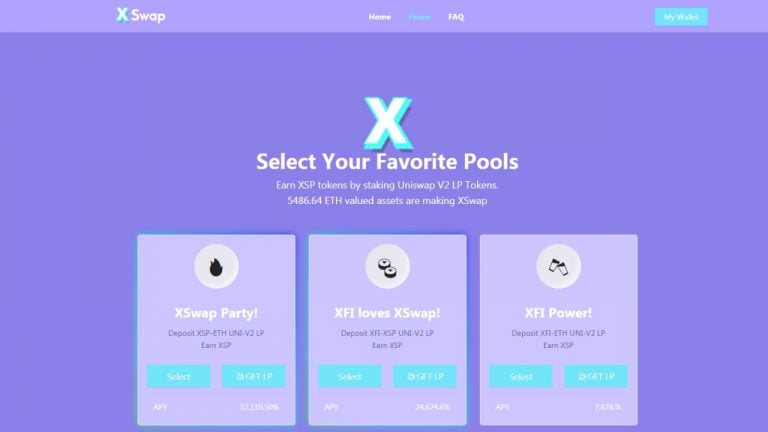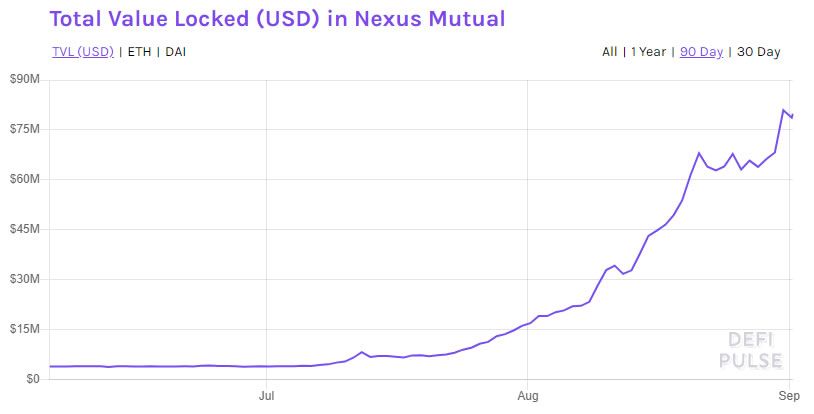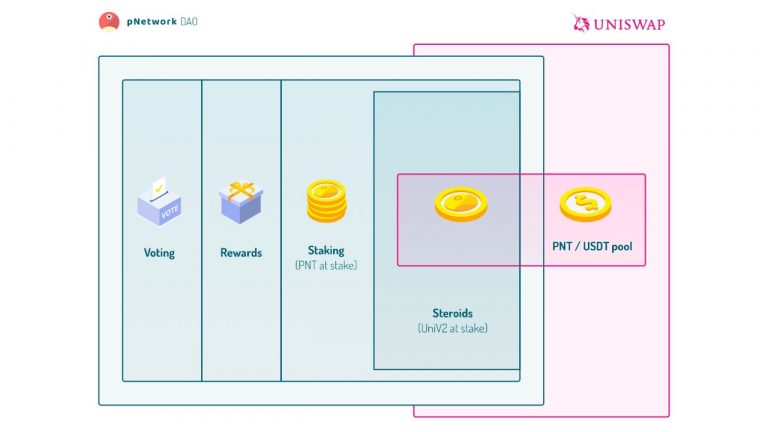
2021-5-25 16:45 |
Trading cryptocurrencies mostly take place on centralized exchanges. The popular ones being Coinbase and Binance. These platforms are run and controlled by the company that operates the exchange. They must manage users’ funds under their control by using a traditional order book system to facilitate trading.
Order book-based trading needs a buy order and a matching sell order to trade in both price and quantity successfully.
For instance, before you can sell one bitcoin (BTC) for $57,000 on a centralized exchange, you’d need to wait for a buyer who is looking to buy an equal or higher amount of that Bitcoin at that price.
The main constraint with this type of system is liquidity, which, put in context, refers to the depth and number of orders there are on the order book at any given time.
What is Uniswap?Uniswap is a decentralized exchange. It is fully decentralized and completely different because it uses a relatively new type of trading model called an automated liquidity protocol. First built in 2018 on top of the Ethereum blockchain, Uniswap is compatible with all ERC-20 tokens and infrastructure such as wallet services like MetaMask and MyEtherWallet.
Uniswap is also completely open-source, meaning that anyone can copy the code to create their decentralized exchange. Users can even list tokens on the exchange at no cost. Uniswap being a decentralized exchange (DEX), also allows users to gain control of their funds at all times as opposed to a centralized exchange that uses an internal database to store the private keys of users. The risk of losing assets if the exchange is hacked is eliminated in Uniswap.
The Uniswap Liquidity PoolUniswap, Ethereum’s most popular market maker (AMM) exchange is a decentralized ERC-20 exchange, but it is not designed for tokens only; it also supports Ethereum. We can also see Uniswap as an exchange protocol that permits you to exchange ERC-20 tokens without fear. The smart contract is written in Vyper Smart Contract Language, and it allows for decentralization, security, censorship-resistance, and permissionless utility.
Uniswap Liquidity pool gathers tokens in a smart contract model, and users trade against the liquidity pool. You or anybody else can swap tokens or provide liquidity by depositing tokens into a smart contract and receiving pool tokens in return. You can also list a token on Uniswap.
Apart from ERC-20 to ERC-20 token exchanges, you can easily exchange Ethereum for any ERC-20 token in a decentralized manner, with no company interference and no KYC involved.
In Centralized exchanges, platforms act as intermediaries over your money, and they charge you commissions for facilitating transactions. The Uniswap platform is the opposite. You always have total control over your money. Once you initiate a transaction, the money leaves your wallet and is put back in another format. This is how it ensures that there is no censorship.
Read also:
1Inch Exchange reviewAave vs CompoundAave price predictionUNI price predictionFTM price predictionTop 10 Binance Smart Chain Projects – Best DeFi Coin on BSCRead also about the top 10 DeFi projects overall.Best Yield Aggregator on Binance Smart ChainBest Yield Aggregators on Ethereum BlockchainPancakeSwap review Yield farming on UniswapYield farming allows you to make more money with your crypto assets. How does this work? Like in traditional banks, where you can Provide your surplus cash for a fee in interest, you can get paid for depositing your tokens with crypto. Uniswap avails you the opportunity to become a liquidity provider.
Uniswap FeesOn signing up on the platform and creating a liquidity pool, you share 0.3% of the transaction fees on the pools. You also have access to the percentage of liquidity you provide on the commission. For example, if you provide 60% liquidity to the liquidity pool, you will earn 60% of the transaction fee.
You can track your earnings with the following steps:
Sign up to the Uniswap webpage to enter your address shown. Click the “Analyze ROI” for the system to process your liquidity position and display them on the summary table.Go on to click the address, and you will see the ROI and other KPIs. How Uniswap Liquidity Pool worksWe will go further to explain how the Uniswap Liquidity pool works. The liquidity pools are an aggregation of tokens in smart contracts. There are many ERC-20 tokens in this liquidity pool for you to exchange – swap, send, and Pool- with another person, With Ethereum being the conduit. So, you can create a new exchange pair in a new liquidity pool for any token of your choice.
For example, you can be part of the ETH/DAI liquidity pool. You will need to make an equal value of Ethereum and DAI, which is the token that you want to participate with. Therefore when someone comes in and decides to trade ETH/DAI on Uniswap, your liquidity will be taped.
If someone wants to trade Ethereum in exchange for DAI, your DAI liquidity might reduce while Ethereum liquidity goes up. If your DAI goes down by a dollar, your Ethereum will go up by a dollar also. This is the way that the Uniswap Liquidity Pool work.
How To Do Yield Farming On Uniswap V3When you get on the exchange platform, You will see “clickable” buttons like Swap, Send, and Pool. When you click Pool, it means you want to
add liquidity, remove liquidity, or create your exchange pair.Uniswap is designed so that you can add or remove the liquidity pool on the platform. We will explain how you can carefully carry out these tasks.
How to create liquidity pool on Uniswap V3Creating a liquidity pool is similar to creating your exchange. This allows you to control your tokens. Here are steps on how to create a pool:
Start by visiting the website. (app.uniswap.org)When a Metamask Notification popup, click on the Confirm button to connect Uniswap to your account.Click on the Pool tab.Go through the dropdown to select “Connect Wallet.” This could mean creating an exchange.Copy your token’s contract address (from Etherscan, coinbase wallet, or walletConnect, for example). Paste the address on the Token Address field, and select it from the dropdown. Click on the “join pool” button. Metamask Notification popup shows, click on the Confirm button. How to Add Liquidity to Uniswap Liquidity PoolTo add liquidity to a Uniswap Liquidity pool, there are a few steps you’ll need to follow. Firstly, bear in mind that you’ll need to have an ERC-20 wallet.
You will need to log on to the site of Uniswap (app.uniswap.org). Click on ‘pool,’ When done, click on “Join Pool” to navigate the interface for adding liquidity.Search for pools. For instance, you could prefer to TEND, KIMCHI, Dai, or any other pools. Next, you will click on “add liquidity.” It is seen on the screen, and the position can differ depending on if you are using the desktop version or mobile version. Uniswap will show you the balance found on your connected wallets (Eth and other ERC-20 tokens). You will also see the exchange rate and the share of the liquidity pool.After you enter the ETH or DAI value, Uniswap will autofill the correct amount of the other assets depending on the current exchange rate. You can click on the transaction details to see more information, such as the number of liquidity tokens you will be minting. The details will also come with the value of the tokens you want to mint. Now you click the blue “add liquidity” button. For those of you using the MetaMask wallet, you can adjust the gas and then click “confirm.” Once the transaction has been confirmed on the Ethereum blockchain, You will see your updated ETH and DAI balances and your share of the trading pair’s total liquidity pool. ConclusionThis guide is as explanatory as it can be. We hope it is of great help to understand how Liquidity pools in Uniswap work and perhaps in helping you decide if Uniswap Liquidity pools suit your investment style. You can try to invest with a little sum before opting to up your investment stake if you wish to.
FAQ What are Liquidity Pools?Liquidity pools are pools of tokens locked in a smart contract to aid liquidity. The main aim of liquidity pools is to allow traders to trade their digital assets and, at the same time, earn rewards on their asset holdings.
What is Uniswap V2?On the 19th May 2020, Uniswap released its second version on the Ethereum Mainnet to coincide with the core contract v1.0.1 release after series of testings on the Rinkeby testnet. So far, The protocol has been used on the Mainnet, and no major issues regarding breakages have been recorded. This further strengthens the claim of the smart contract’s integrity.
Uniswap V2 is superior to its predecessor, Uniswap V1, in the following regard.
ERC20 to ERC20 token swaps: with the V2, ETH is no longer needed to be an intermediary token for the swap process. A term known as “ETH bridging.” No intermediary means the transaction count is cut in half, and more money is saved on gas fees. Flash swapping: This refers to the ability to “borrow” tokens from a Uniswap pool, make some arbitrary transaction with external services, and repay your initially borrowed funds, all in one transaction. The atomic nature of the transaction makes for full reversal if the transaction fails at any stage. The major use for such a feature is to execute arbitrage trades leveraging a liquidity pool and closing a Maker Vault.Helper ArchitectureTechnical Improvements Sustainability Difference Between Uniswap V2 and V3? Uniswap constant product curveUnlike the Uniswap V2, in the Uniswap v3, Liquidity providers do not only put their assets in liquidity pools and spread them evenly along the price curve. They also have the privilege to choose the price range they want to allocate their assets to and earn from fees when the price is within the selected price range.
Imagine that you put 1 ETH and 2,000 DAI in the ETH/DAI liquidity pool, and you choose to put it in the $1,950-$2,050 price range. What you are saying is this:
“Take these assets and put them in the Pool. Whenever someone buys ETH for any amount of DAI between 1,950-2,050 DAI, I get the fees from that swap. If ETH price is outside that range, I don’t get the fees.”
Higher Capital Efficiency for Uniswap v3 LPsIn V2, there is a minimal chance that the price of your stablecoin Pool, e.g., DAI/USDC, would go out of the $0.99-$1.01 price range, even though your assets would be evenly distributed along the price curve. This causes you to have only a tiny percentage of the total amount of funds as earning fees. In Uniswap v3, it’s different. You deposit 100% of your assets in that $0.99-$1.01 range. This way, it’s not only a fraction of the assets you deposited that is making returns for you but the whole amount.
For non-stablecoin pools, like the ETH mentioned above/DAI pool, you can’t predict the price range as accurately as you can for the DAI/USDC pool. However, you can select a wider price range to account for ETH price changes – such as $1,950-$2,050. You would not always earn fees, but when you do, you will gain much, much more than in v2 because you are using 100% of your assets, not just a small portion. That’s how concentrated liquidity makes higher capital efficiency possible.
Active LiquidityAs earlier stated, two people in a pool would get the same amount of fees; so far, ETH’s price stays within the $1,808-$2,215 range. What happens if it goes beyond that?
In this case like this, your liquidity becomes effectively removed from the Pool and is no longer earning fees until you decide to update your range to account for the price change.
There are three main options in this case
You choose multiple price ranges. You choose one wide price range, settle for lower capital efficiency but reduce the risk of price fluctuations. You pick one narrow range, get super-high capital efficiency, and risk being exposed to a much higher risk. Flexible FeesUniswap v1 had a flat 0.30% fees, of which 100% goes to the LPs. Uniswap v2 introduced a 0.05% protocol fee which could be turned on/off.
Uniswap v3 brings a lot more community-governed flexibility through multiple fee tiers:
0.05% – expected for stablecoin pools like DAI/USDC
0.30% – for standard non-correlated pools like ETH/DAI
1.00% – for exotic non-correlated pairs
The Uniswap team added even more flexibility by allowing the governance to include additional fee tiers. Protocol fees are also there, but they are put off by default. However, the governance will be able to turn on the protocol fees on a per-pool basis and set them between 10%-25% of LP fees.
Non-Fungible LiquidityThis might be one of the most important uses of NFTs. The liquidity positions of Providers in Uniswap v3 aren’t fungible because they come in different price ranges. ETH/DAI positions at $1,950-$2,050 and $1,900-$2,100 are not the same. The first one comes with higher capital efficiency but also more risk and the possibility of inactive liquidity. This is the main reason why LP positions in Uniswap v3 cannot be represented as ERC20 tokens in the core protocol but rather by non-fungible ERC721 tokens (NFTs).
What is Uniswap V3Uniswap is undoubtedly the leading Decentralized Exchange and one of the world’s most popular DeFi platforms. Innovative with every new iteration without retaining the bugs of the previous ones. With Ethereum’s scalability issues being a major problem generally, Uniswap v3 puts more trust in its underlying infrastructure than previous versions. It enables a higher return on capital for its users and brings new possibilities for the development of an ecosystem around it.
The new features on Uniswap v3 are quite complex and are not so easy to understand by ordinary crypto holders. However, we expect to see developers working on their solutions to make Uniswap v3 more user-friendly and strategy inclusive.
How to make money with Uniswap pools?You can earn o Uniswap as a liquidity provider. For instance, for every liquidity you provide, you earn 0.3% of the Pool.
How do you calculate pool liquidity?Use X*Y =K to determine the pool liquidity. X, Y, and K represent the value of ETH, ERC-20 token, and Constant, respectively. The above equation represents the demand and supply of ETH/ERC-20 tokens, and it uses that to balance the price of the pooled token.
How to find the most profitable Pool?For more profitable pools, metrics such as volumes, pool ROI, and so on come in handy.
How Yield Farming Can Offset Impermanat LossImpermanent loss is defined as the difference between holding tokens in an AMM and holding them in your wallet. It is a result of token price divergence. The more the divergence, the greater the impermanent loss.
Supplying liquidity on Uniswap is profitable, but you can lose money in some situations if the price moves too much compared to when you hold the underlying assets.
How Trading Fees Can Offset Impermanent LossTo reduce the effect of impermanent loss within the decentralized finance ecosystem and give users incentives to supply tokens to liquidity pools, Uniswap provides a 0.3% fee for every trade. For liquidity providers, more trading and more volatility mean more money. With enough trading volume on the platform, liquidity providers can accumulate fees to reduce the effect of impermanent loss.
How Price Changes Impact the Value of LP Tokens on Uniswap and Other Such ExchangesLet’s take an example of an imaginary Mr. Ayo who provided liquidity of $1k Bitcoin and $1k USDC.
If Bitcoin were to double in price, the total assets in your Pool would total $3k. With $2k in bitcoin and $1k in USDC. If you think this is the case, you are a bit wrong. What Uniswap does that it will constantly rebalance the assets, so it would have to sell bitcoin for USDC to reach the equilibrium again, meaning you will have $1.5k Bitcoin and USD 1.5k (not considering transaction fees). In simple words, the change in the price of any of the tokens will cause a rebalancing.
Since the price of both tokens is not the same, you could lose out on huge gains Because of the rebalancing.
The post Uniswap liquidity mining: How to provide liquidity on Uniswap V2 & V3? appeared first on CaptainAltcoin.
origin »Liquidity Network (LQD) на Currencies.ru
|
|























